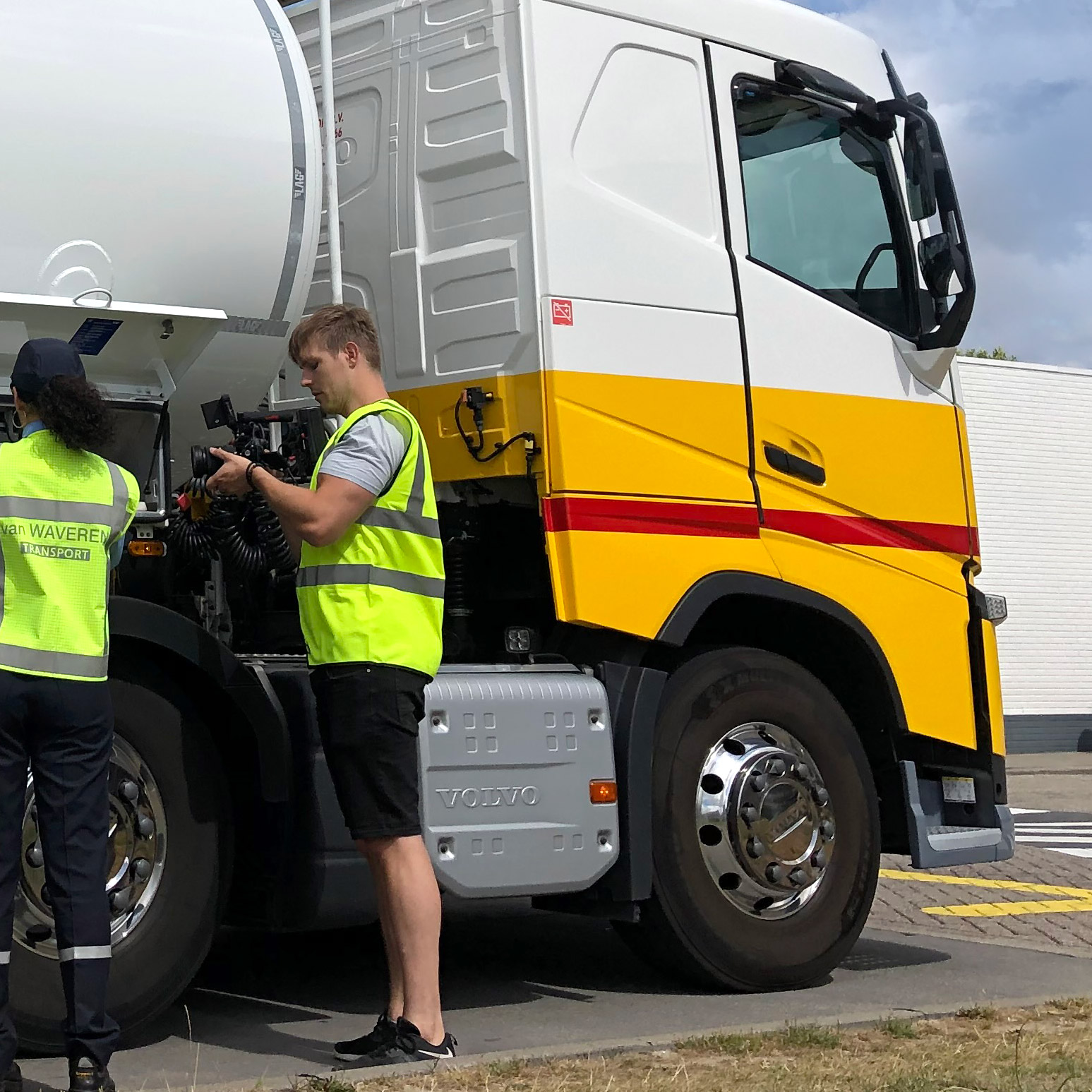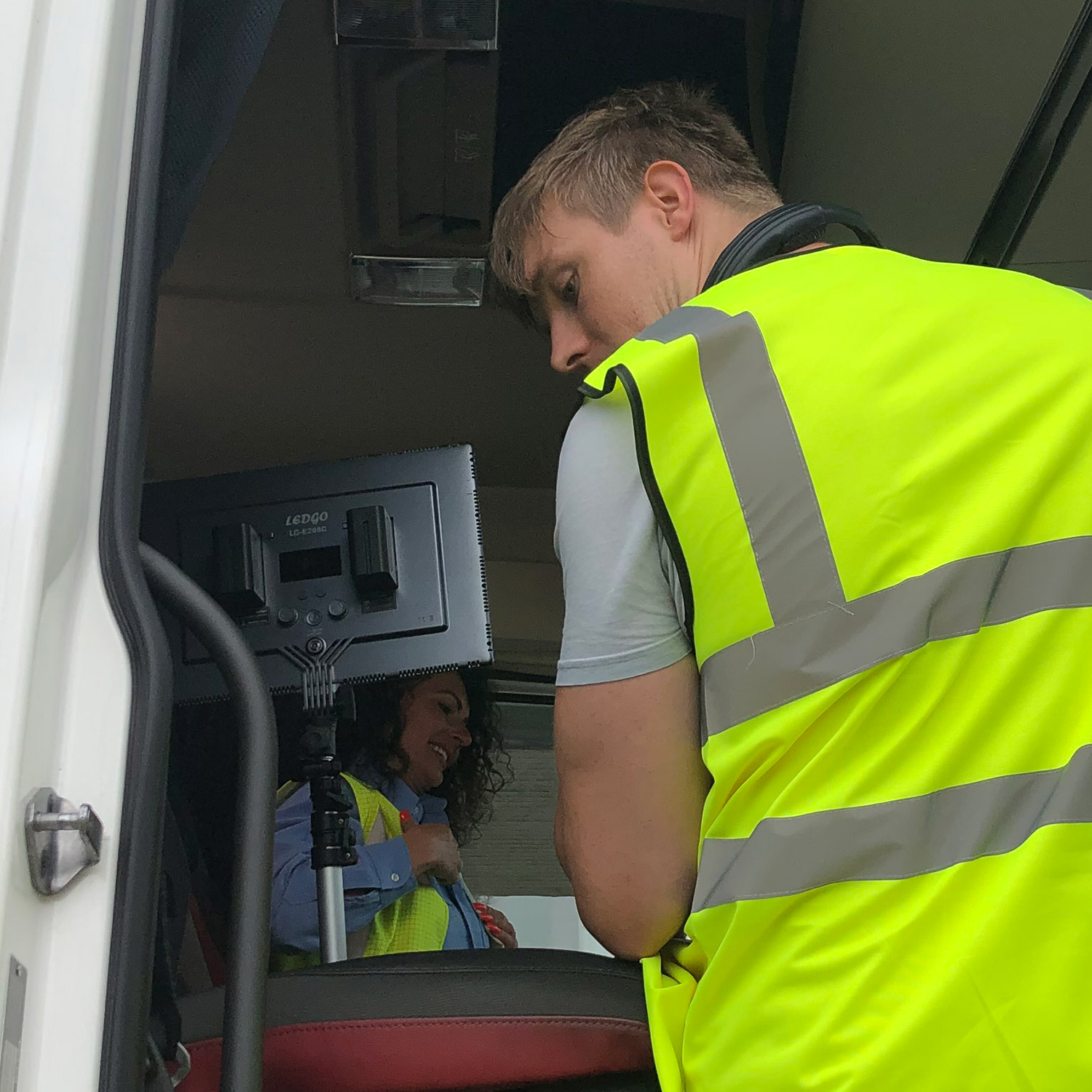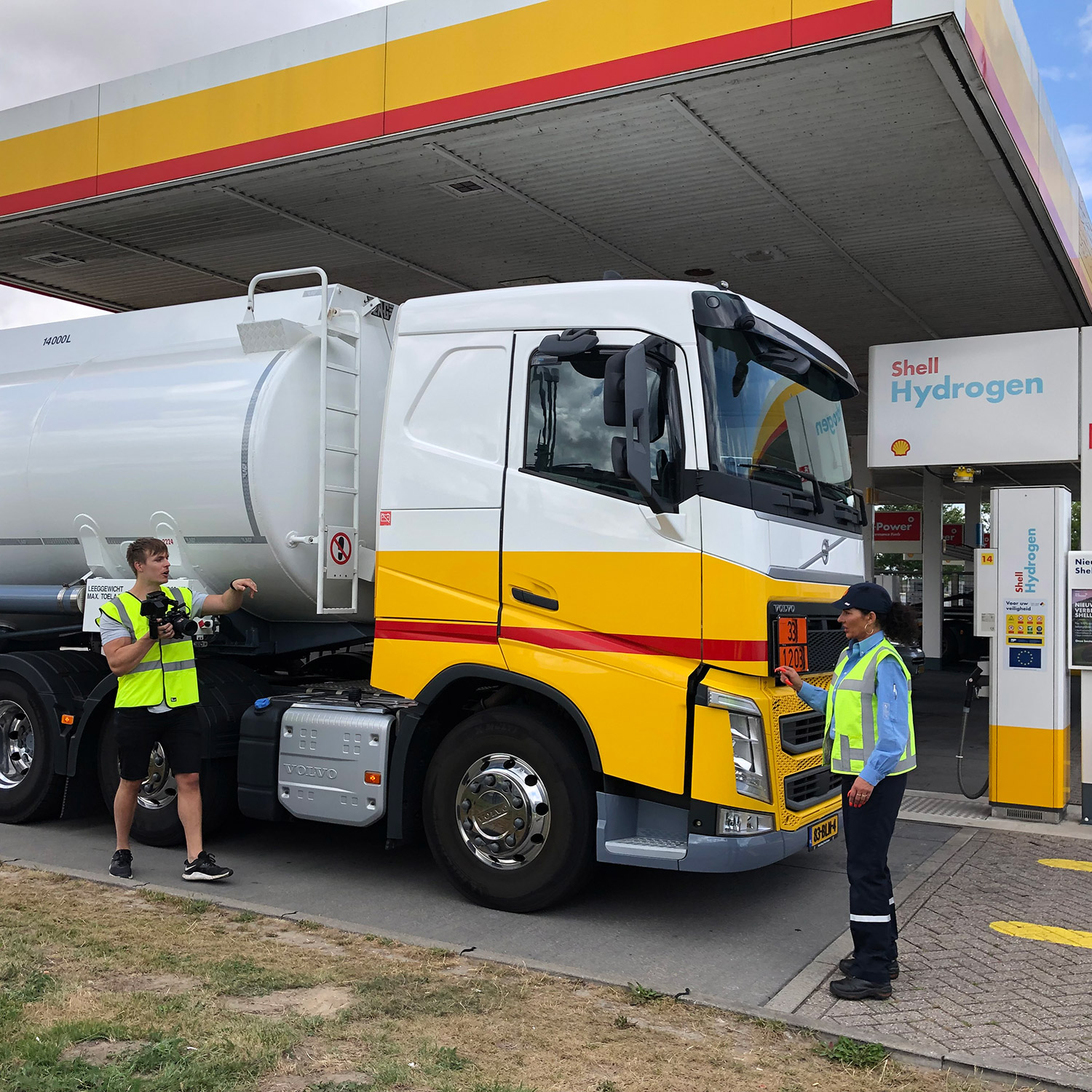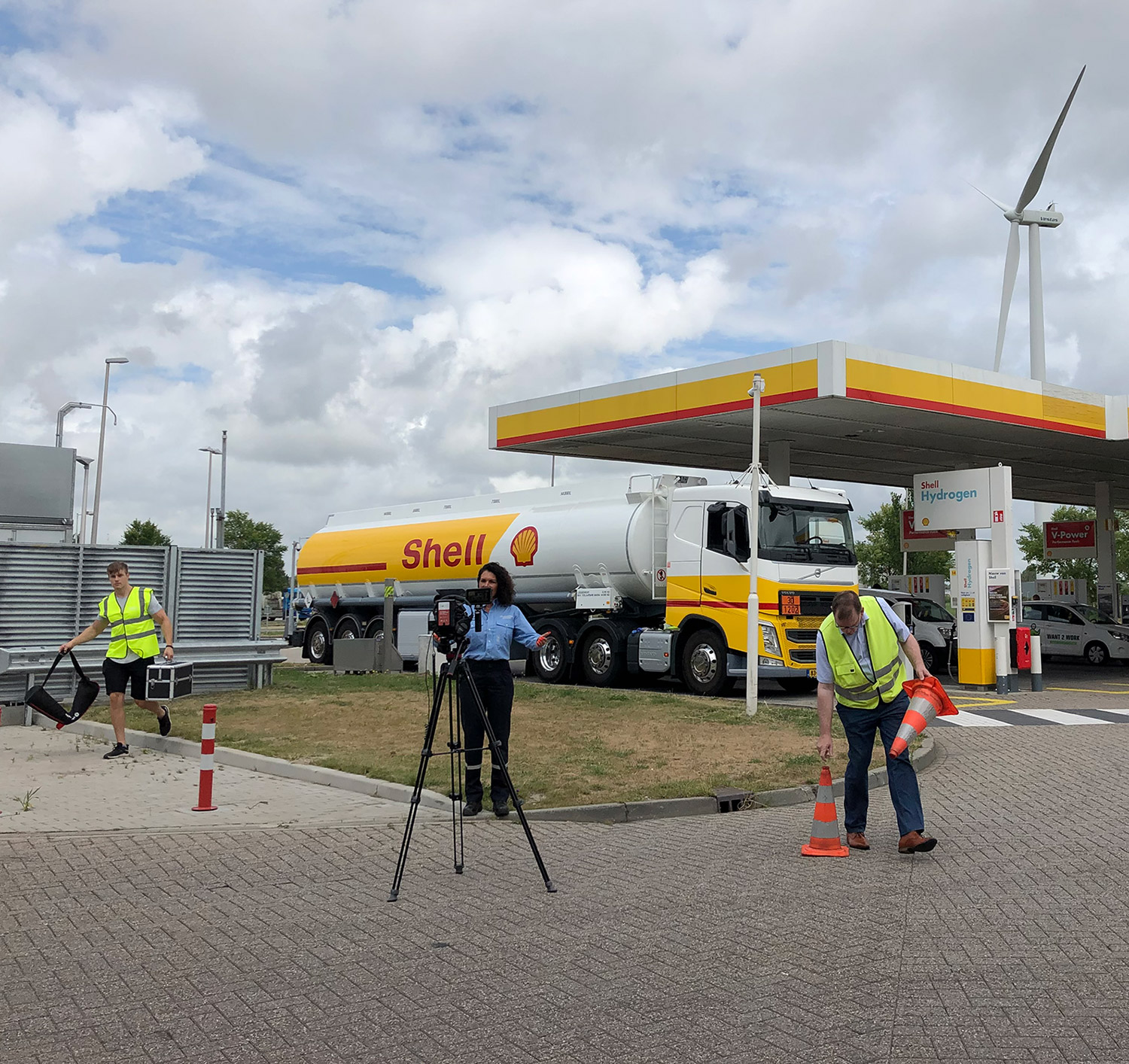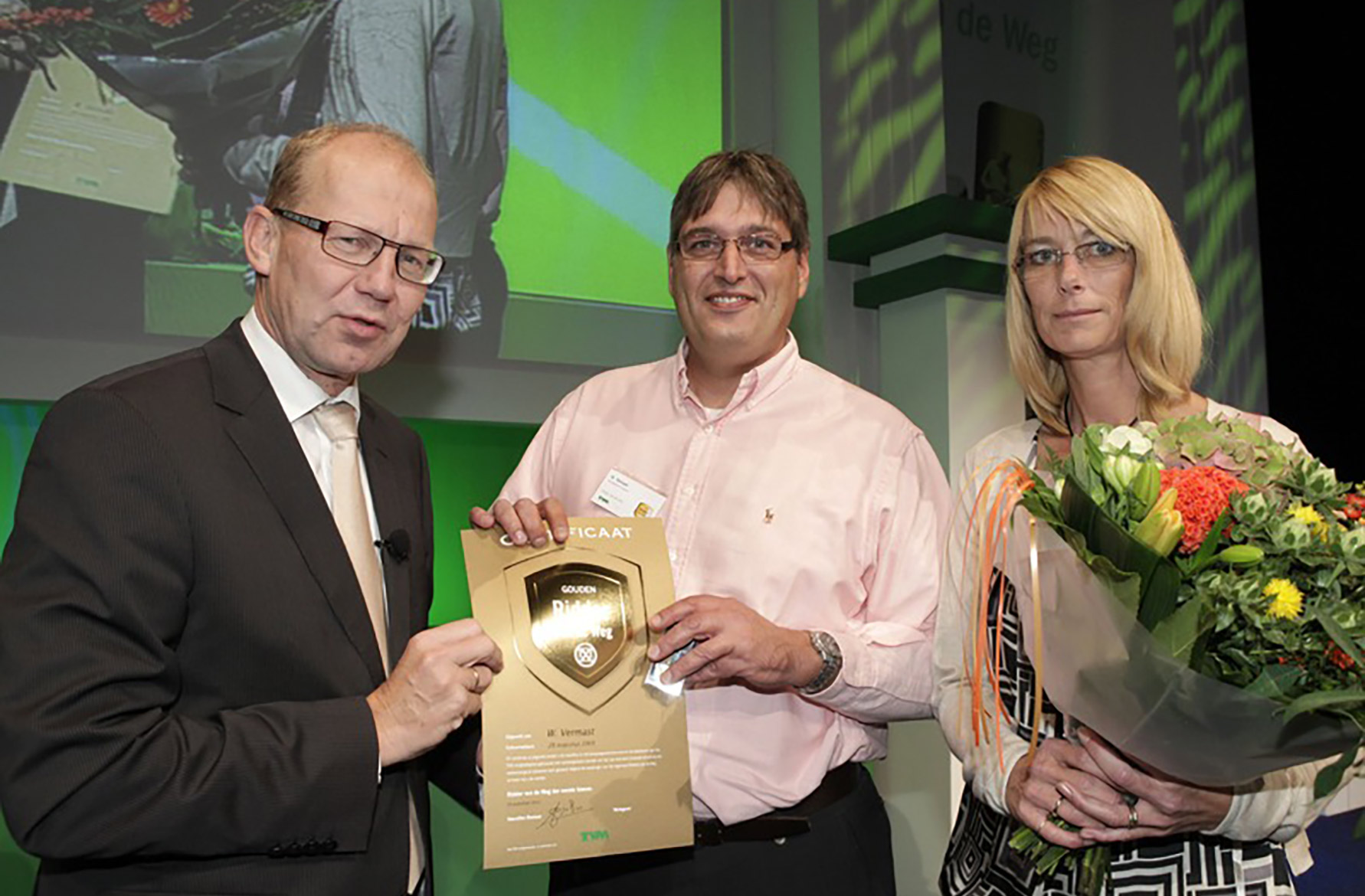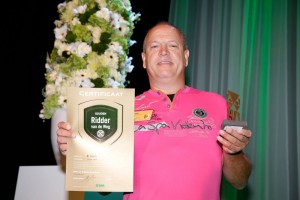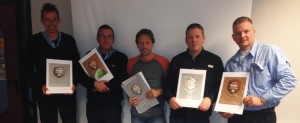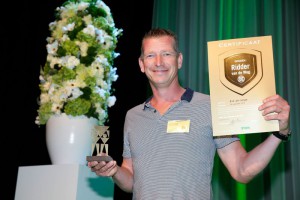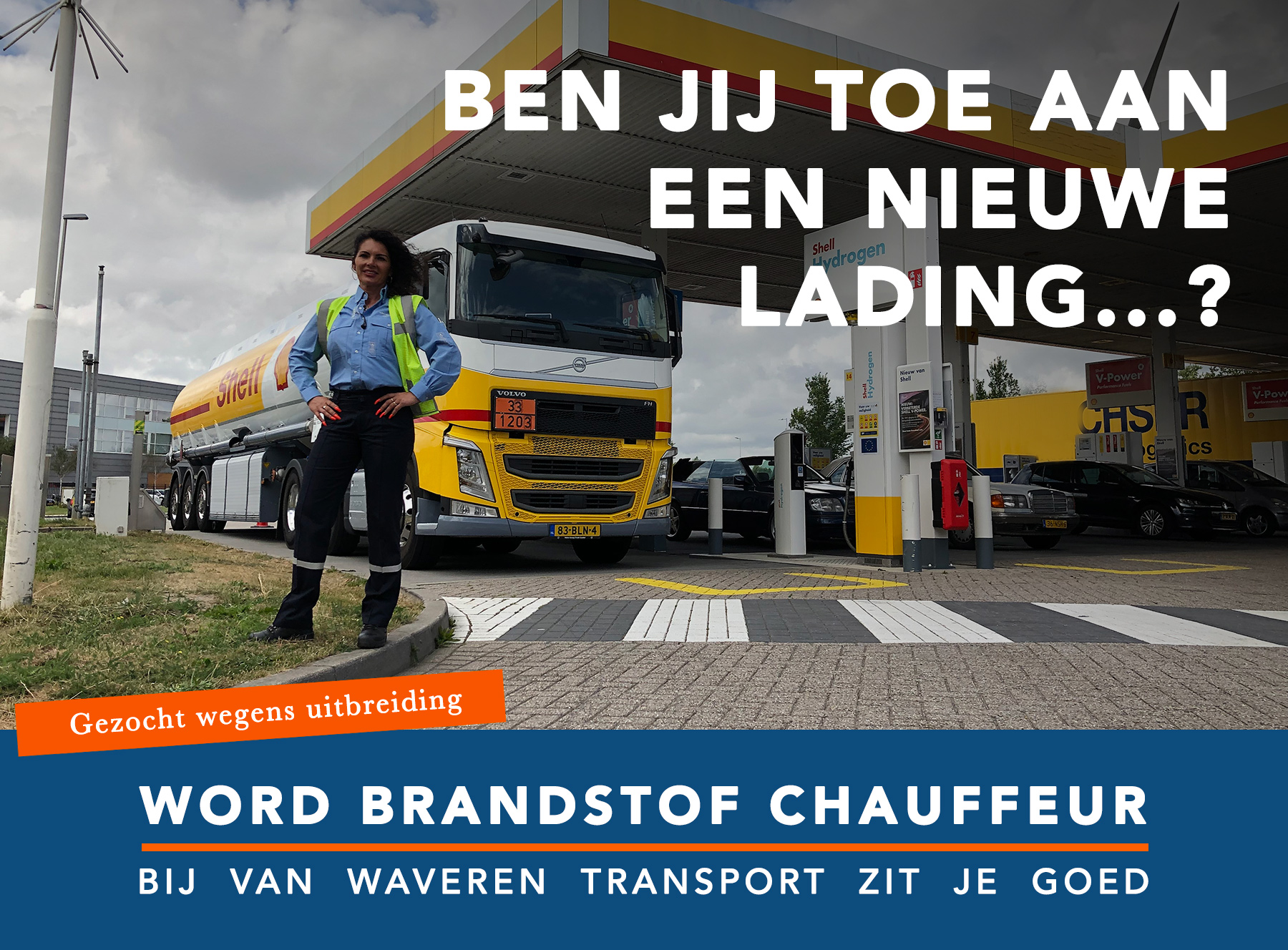Last week we interviewed Es van Waveren, founder of Van Waveren Transport and transport entrepreneur in heart and soul. He is successful in his field and has many cars in his own blue color. Es, a serious, cheerful man with a vision, looks back with pride on the past 5 decades of his company. This year his company celebrates its 50th anniversary. The organisation has grown steadily from 1 second-hand Scania to a fleet of more than 65 modern tank and container trucks, with a home office in a beautiful rustic farmhouse on the Sloterweg on the outskirts of Amsterdam.
Van Waveren Transport is a real family business, daughter Marga & cousin Robbie are responsible for the QHSSE, daughter Annemarie does the tanker and training administration, grandson Rowdy is also working on the planning for a number of years and Es does some work himself, ‘manus of everything’, according to Es’ his words. About ten years ago Es stopped as a driver, but almost every day Es is still behind the wheel to keep track of the maintenance of the Shell cars.
How did Es actually become a transport entrepreneur? Was it early on or was it a combination of circumstances? In this interview Es talks about showing guts and important lessons. What is the company’s strength? “We always go for quality. You must do it right, or you must not do it at all. Below you can read how it all started and what wisdom Es likes to share with other transport fanatics.
Was transport your childhood dream?
“Transporting fuel, dangerous goods and chemicals has always been a bit on my mind. Of course it depends on what you roll into, but I used to draw tank cars with my brother. He often drew a garage, because he was the maintenance man. We would put it here somewhere at the back of Sloten. Yes, as a child I liked to draw tank trucks and also milk trucks. When I was a little boy I was often allowed to go on the milk cans truck with my older friend Jacob Veldhuisen. Then, when I was about 15 years old, I started working as a co-driver on the bottle truck with Henk, Jacob’s brother. I often drove myself, you didn’t need a driver’s license at that time and I had learned to drive a long time ago from Jacob. When I turned 18 I drove Jacob’s milk truck and of course I immediately got my driver’s license. I took the milk truck to the CBR, switched to a small Opel Blitz and showed a few tricks. That’s how I got my driver’s license, was nothing. I also started dating Adri, my great love. My father-in-law persuaded me to work for them, so I got a big Scania, as a boy you naturally liked that.”
How long did you work on that big Scania?
“On that big Scania only lasted a short time, because when I was 19 I had to be in military service for 21 months. That was still the cold war then, we had to go to East Germany, keep an eye on things there. That was nice. I really hated having to go in, but I never wanted to miss it. No way, beautiful! Super strict then, that’s right, you couldn’t do anything. I was smoking in the barracks once and dropped some ashes. A guy like that sees it, he says, “Report to the waiting room tonight and sweep those stairs with a toothbrush.”
And then he came at 10 o’clock at night, then you had to stand in front of your bed or lie in it and then he ran his finger over those stairs and said “Is this clean?! Tomorrow night again.” If it was Friday then you hoped that those stairs were really clean, otherwise the guy would say you had all weekend. We were free every other week during the weekend. But when we were on exercise in Germany, we were gone for 6 weeks. So then I was already dating Adri and we wrote letters, you didn’t have telephones. And that’s how I wrote to my mother, send me some money, take it upstairs from my safe, that was a cigar box, hahaha.”
How did you get your first car?
‘When I came back from military service, Jacob had new drivers on the milk truck, so I started working for my uncle, at Rutte in Osdorp. It was a transport and contractor company at the time. Once a crane was broken, further on was a farmer where we walked into the barn and there was a Scania in Shell colors. I say to that farmer, what are you going to do with such a Scania in your shed? He says, well that belongs to my brother, but he is sick and he is dying, so he is for sale.
I thought this is my chance, so I bought it. I had to take over the financing of that car from that gentleman, but that cost 12%. Gerrit Veldhuisen, Jacob’s father, said, you’re not going to do that, I’m going to call Bram, the director of the Rabobank in Sloten, he had good contact with him. We go there one evening, never forget it, he takes a small butt cigar from the chimney and Gerrit tells the whole story, Bram agreed if Gerrit stood surety and signed it, then I got it for 8%. Say 30,000 guilders, that was the loan and I paid 8% on that. That saves quite a bit on a drink: 1,200 guilders per year. It was a car, the box could be removed from that, in the winter there was a tank at the Shell, which fitted exactly on top and I could use it to fill the apartment buildings with fuel oil.”
What were your first assignments?
“I first transported goods for the Nabek to and from the ports of Amsterdam for a year with that Scania and in the winter I could fill the apartment buildings with fuel oil for the oil company Shell. That’s how I started in 1972, when it was also an oil crisis. A year later, many drivers at Schiphol retired and so the drivers had to move from the Amsterdam depot to Schiphol. Shell was going to outsource the transport of motor fuels and asked me, is it something for you? That led me to drive petrol and to specialise in tank transport. The first 6 years I drove myself, then we started driving in shifts and I hired my first employee, Gerrit van Schagen. If you did well at Shell and there was more work, they said, you get a little car. And those who didn’t do well had to hand in a car. And that’s how I started hiring drivers, because I could buy a car every time, those were real highlights.”
What creates distinction and success?
“Shell was happy with the services I provided and advised me to do something else on the side. Because, they said, if something happens, you will go bankrupt and we don’t want that. Then we bought a blue one that Gerrit started on and we started with those tank containers. Tank containers and fuel distribution naturally combine well because they are both hazardous substances. Otherwise you will do work that everyone can do, you should not do that. That always pays less. You have to specialise. With tank containers you are often away from home all week, there are people who would like that. I myself have not driven tank containers much.”
What is the difference in traffic 1972 versus now?
“In 1972 there were paved roads, but far fewer main roads. So you had to go inside a lot more, but you didn’t know any better. Fewer cyclists. Everything was calmer. Now people are all crazy. They have no patience, they have no time for anything, they are aggressive and selfish. I still drive wagons, pick them up and drop them off. You can already see it here at the road narrowings, how often they are opposite each other. The car must of course reverse into the terrain, people don’t understand that. Then you should not hesitate, then you should immediately put it down at an angle. If you start to doubt it will become a mess, that doesn’t really happen with me.”
How do you ensure safety in busy traffic?
“For quality you have to have good stuff, otherwise it won’t work and of course you have to train those guys well. It all has to do with safety. We buy extra options on the cars that are safe for both road users and drivers. Now a lot of things have become mandatory, but we already had it twenty years ago when it was not yet mandatory. For example, if he drives up close to something, that the car stops by itself, etc. Further training and refresher courses are now also mandatory, and we have been doing this for over twenty years. The cars must always be well maintained. With the Volvos you always know exactly when something breaks, so before then you have to respond preventively and then it will work again for a long time. You don’t want to stop along the way, it costs three times as much. I will always continue to invest in good equipment, maintenance, safety systems, education and training. We always have spare cars available in case something needs to be done with the car, inspections, technical maintenance and the like.”
What is the highlight of the past 50 years?
“The absolute highlight in the past 50 years was in 1992 that we were able to buy the farm on the Sloterweg. In the past when I was dating Adri and we drove past the farm with my moped, I always said, I’m going to buy that farm sometime. Well that was 25 years later, in 1992 we finally bought the farm. With a tenant in it, but that was out in 1994. As friends among themselves, of course, they had talked about it before and when Jacob could buy the farm a little further on, he was told that it was also for sale. So we immediately sent the same broker after it. Don’t hesitate, act right away. After the tenant moved out in 1994, we renovated everything and that was also the moment that the company made a spurt in growth. At one point I just bought 10 more cars at the same time.”
How is your relationship with the drivers?
“I know all the drivers personally. Many tank container drivers leave early on Monday morning, around four o’clock, so I’m certainly always there to have a cup of coffee with them. In addition, I regularly go to Pernis, so I also meet them there and there are also guests who have been working here for years. You have to get to know the new one. With the toolboxes we get feedback about how the drivers experience their work and I always speak to the drivers of the blue car here, anyway on Monday morning. I am always there.”
Do you have another dream?
“Right now, I am 75 years old and I can say that I have lived my dreams and achieved my goals. I have the house I wanted and the work I wanted to do. Can’t break right? And if I were 25 years old now, I would start driving a Shell car again. I always liked that. Everything well arranged. What I would really like for the company is a larger site. I would like to continue to live here, but I think we should actually have a larger area for the cars. It would be nice if we could move the company to an industrial estate with a garage, a car wash and everything close at hand. That would be my ideal image if I were young now, so the young people should do that. By that time I might be 90 and then I think, let those guys go, it will work out. And if I want, I can still go there for a chat.”










